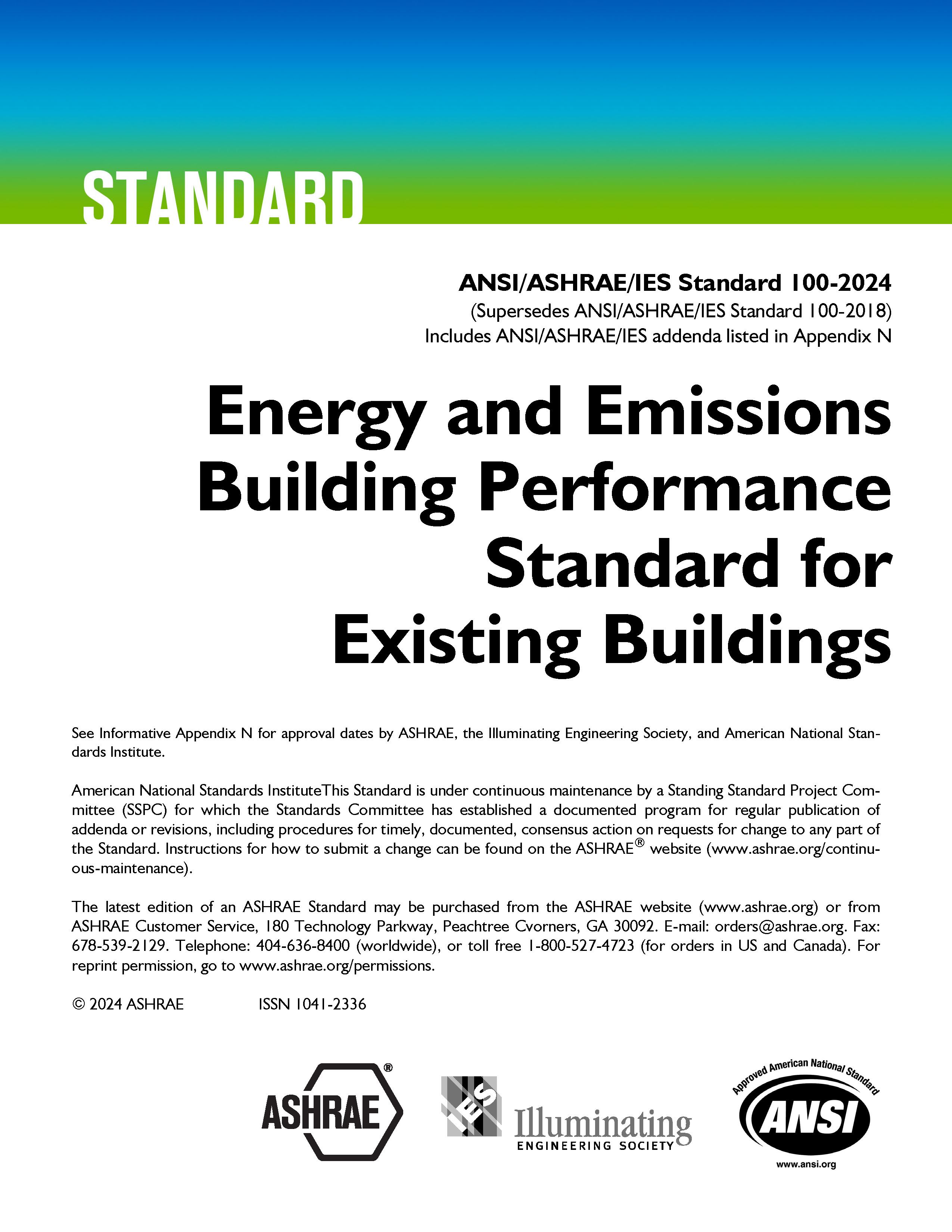
ANSI/ASHRAE/IES Standard 100, Energy and Emissions Building Performance Standard for Existing Buildings, is a code-ready building performance standard that provides processes and procedures for reducing energy consumption and carbon emissions through improved energy efficiency and performance of all types of existing buildings, including residential, commercial, institutional, and industrial.
New in the Current Edition: The latest (2024) edition of the standard expands its focus to incorporate building decarbonization. Carbon emissions performance requirements are now included for existing buildings, along with emissions targets for dozens of building types.
Other key updates include:
- New metrics for establishing greenhouse gas (GHG) emissions targets, as well as continued improvements to energy efficiency and performance in existing buildings
- Building requirements to:
- Establish an energy management plan incorporating efficient, low-carbon equipment into capital replacement
- Achieve energy and emissions performance goals
- Implement an operations and maintenance program for continued building performance
- A simple compliance mechanism for energy-efficient and low-emission buildings
- Energy audit and decarbonization assessment and a separate compliance process for building types that lack energy or emissions targets
- Guidance for jurisdictions seeking to develop their own energy consumption and/or greenhouse gas emissions targets